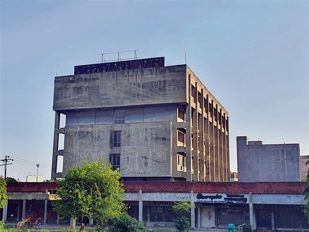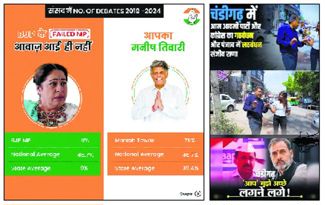
Bhuwan Bhaskar
A manmade disaster is waiting to choke residents of the National Capital Region again this winter because of stubble-burning in the neighbouring states - Punjab, Haryana and Uttar Pradesh. It is estimated that about 35 million tonnes of paddy stubble are set afire by the farmers of Punjab and Haryana to prepare the fields for the winter crop.
Besides pollution, it is a sheer waste of nutrients, required to rejuvenate the soil. One tonne of paddy straw contains approximately 5.5 kg of nitrogen, 2.3 kg of P2O5 (phosphorus pentoxide), 25 kg of K2O (potassium oxide) and 1.2 kg sulphur. Agricultural scientists say that the straw can replenish 80 per cent soil nitrogen and potassium, if not burnt. The primitive method of clearing the field burns a significant amount of micro-nutrients and carbon present in the stubble. In addition, the burning affects some soil properties, such as temperature, pH level, moisture, phosphorus and organic contents.
The practice of the stubble-burning degrades the environment. It shoots up the carbon dioxide level in the air by 70 per cent. Carbon monoxide and nitrogen dioxide levels jump by 7 per cent and 2.1 per cent, respectively. The burning of one tonne of paddy straw releases 3 kg of particulate matter, 60 kg carbon monoxide (CO), 1,460 kg carbon dioxide (CO2), 199 kg ash and 2 kg sulfur dioxide (SO2). These gases affect human health. Therefore, smashing stubbles under surface soil is desirable, rather than burning them in the farms.
It has been noticed that among the options available for management of paddy straw - bio-char, pellets and briquettes making for thermal power plants and ethanol production - in-situ use of paddy straw as mulch for sowing of wheat and its incorporation in soil for planting of potato and other vegetable crops is the most feasible and economical option for handling the paddy straw, says an official document.
Farmers, however, prefer to burn the stubbles. Why? There are primarily two reasons. One, lack of awareness as many farmers think burning stubbles would kill insects and sanitise soil. The second reason is purely economic - the high cost of removing stubbles from the field. The much-hyped 'in-situ' management of crop residue revolves around eight hi-tech big machines.
There are several solutions to curb this menace, but nothing will work without involving the farmer. The government must involve the entire farm ecosystem to make the movement against the stubble-burning a success.
— The writer is AVP, NCDEX
The views are personal


























